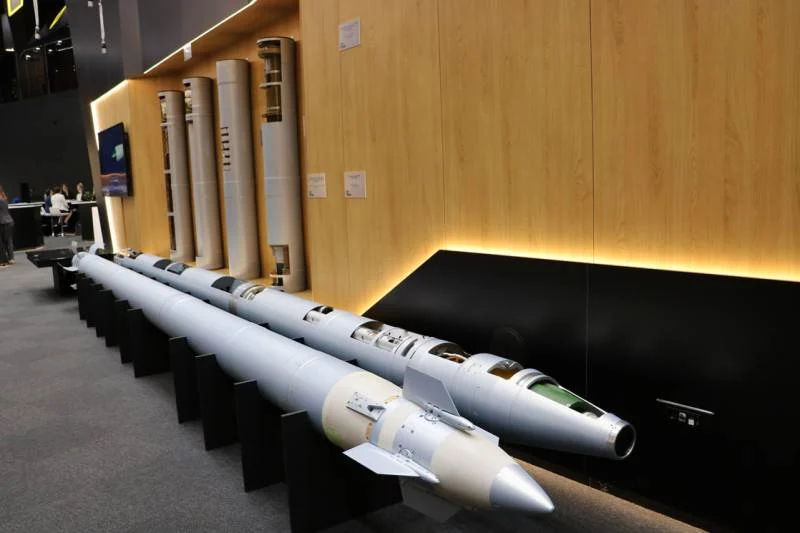Vladimir Rogov, a representative of the administration of the Zaporizhzhya region, stated that the Russian Tornado-S multiple-launch rocket system had become a counterbalance to the American HIMARS MLRS in the Zaporizhzhia direction.
“The appearance in the proper number of Tornado-S multiple launch rocket systems with guided projectiles makes it possible to hit enemy positions 100%. They have meter accuracy. Therefore, now we have a counterbalance to the American HIMARS system that has proven itself in combat conditions,” Rogov said in an interview with RIA Novosti on January 31.
Earlier reports indicated that Russian artillery began attacking Ukrainian military installations with enhanced Tornado-S munitions. The new missiles, referred to as Russian HIMARS, are very accurate and adaptable.
Tornado-S MLRS
The 300-millimetre calibre MLRS “Tornado-S” (under the designation 9K515 “Tornado-S”) is a deep modernisation of the “Smerch” system. The “Tornado-S” was outfitted with an automated guidance and fire control system as well as onboard control and communication systems. The new MLRS is capable of firing guided missiles with a maximum range of 120 kilometres.
The management of the state-owned business Rostec revealed in the summer of 2020 that its enterprises were developing two new rockets for the Tornado-S. The flight range of the goods was anticipated to approach 100 kilometres, and a substantial increase in precision was anticipated. In addition, it was intended to provide the ability to fire with greater dispersion, allowing for the destruction of distant targets.
Alexander Smirnov, General Director of the Scientific and Production Association (NPO) “Splav”, named for A.N. Ganichev, said in November 2021 that the company had begun mass production of corrected Tornado-S projectiles.

Colonel General Alexander Lapin, commander of the Central Military District (CMD) soldiers, declared in January 2022 that the CMD jet brigade would acquire the Tornado-S MLRS in 2022.
The Ministry of Defense released a video about the operational activity of Tornado-S MLRS crews on November 20, 2022. The video did not mention the firing location, target distance, etc. Rossiyskaya Gazeta wrote on November 23, 2022, that missiles were fired at targets 105 kilometres away. The ammunition used satellite navigation.
On December 26, 2022, Izvestia, citing an unnamed representative of the Ministry of Defense, said a new product line had already been developed. The shells have been mass-produced and are even distributed to the troops.
Due to an upgraded design and instrumentation, the precision and the warhead’s destructive force have risen. The capacity to defeat the enemy’s personnel, equipment, and fortifications have been enhanced. The precise tactical and technological aspects are not specified, and the range is only given as “tens of kilometres.”
What is different from the SMERCH system?
The upgrade of the combat vehicle included the installation of new navigational aids. It utilises the GLONASS system and a gyrocompass for movement and topographic positioning. The equipment enables the vehicle to independently reach the location and prepare for fire and assault targets without the assistance of the battery command post.
The fire control facilities have undergone a thorough makeover. The Tornado-S employs a new guidance and fire control system (ASUNO) that incorporates a number of significant advancements. It features improved capabilities for data sharing and designation of targets, as well as faster and more accurate calculations of aiming angles and other characteristics. Additionally, technologies for inputting data into the homing heads of missiles have been developed.
The redesigned ASUNO is compatible with all current calibres and the 30-millimetre rockets under development. ASUNO enables firing a single missile or a volley using obsolete ammunition types at ranges of up to 70 kilometres viably. Due to the vast number of ammunition types, it ensures the defeat of many types of targets.
Sources indicate that new types of missiles with enhanced performance have entered service. It has the same weight and overall proportions, but all the major components are being changed. A new head component with external aerodynamic rudders has been created. It accommodates a satellite and inertial navigation-based guidance system. Control is maintained throughout the flight, making it possible to achieve a low CEP. The new solid-propellant engine has expanded the launch range to 100-120 kilometres. In addition, there is video evidence of Tornado-S launching an unusual, long-range air-blasting weapon with a parachute.
The area of destruction rose by a third with a full salvo: “Smerch” could cover nine football fields with 12 rounds, while “Tornado-S” could cover 12 football fields.
In the past, Russian Defense Minister Sergei Shoigu stated that using Tornado-S MLRS and self-propelled artillery mounts (ACS) 2S7M Malka for counter-battery combat allows for the effective destruction of foreign artillery systems during special operations in Ukraine.
